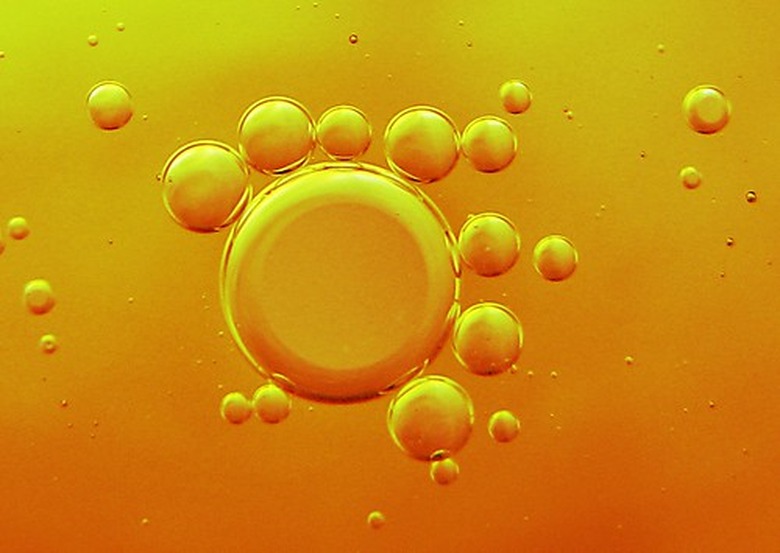What Are The Monomers Of Triglycerides?
Triglycerides are macromolecules called lipids, better known as fats or oils. Triglycerides are named for the monomer components they contain. "Tri" means three, and triglycerides are built from monomers of three fatty acids bonded to a glycerol.
Types
Types
According to the 2009 text, "Biology: Concepts and Connections," there are four basic types of macromolecules, or large carbon-based molecules important in biology: lipids, carbohydrates, proteins and nucleic acids.
Macromolecules
Macromolecules
Macromolecules, also called polymers, are large molecules made up chains of smaller molecules called monomers. Monomers are the "building blocks" of macromolecules or polymers.
Monomers
Monomers
Monomers of any macromolecule are linked together by a process called dehydration synthesis, because a water molecule is removed when the monomers are linked together.
Triglycerides
Triglycerides
The monomers of triglycerides are fatty acids and glycerol. Glycerol is a type of alcohol. Triglycerides are made up of monomers of glycerol molecules each bonded to three fatty acid "tails."
Considerations
Considerations
By some definitions, triglycerides don't have true monomers, since their monomers are fatty acids and glycerol molecules in a ratio of three to one. Other macromolecules consist of chains of identical monomers in one to one ratios.
References
- "Biology: Concepts and Connections;" Neil A. Campbell; 2009
Cite This Article
MLA
Veloz, Liz. "What Are The Monomers Of Triglycerides?" sciencing.com, https://www.sciencing.com/monomers-triglycerides-5652222/. 24 April 2017.
APA
Veloz, Liz. (2017, April 24). What Are The Monomers Of Triglycerides?. sciencing.com. Retrieved from https://www.sciencing.com/monomers-triglycerides-5652222/
Chicago
Veloz, Liz. What Are The Monomers Of Triglycerides? last modified March 24, 2022. https://www.sciencing.com/monomers-triglycerides-5652222/
